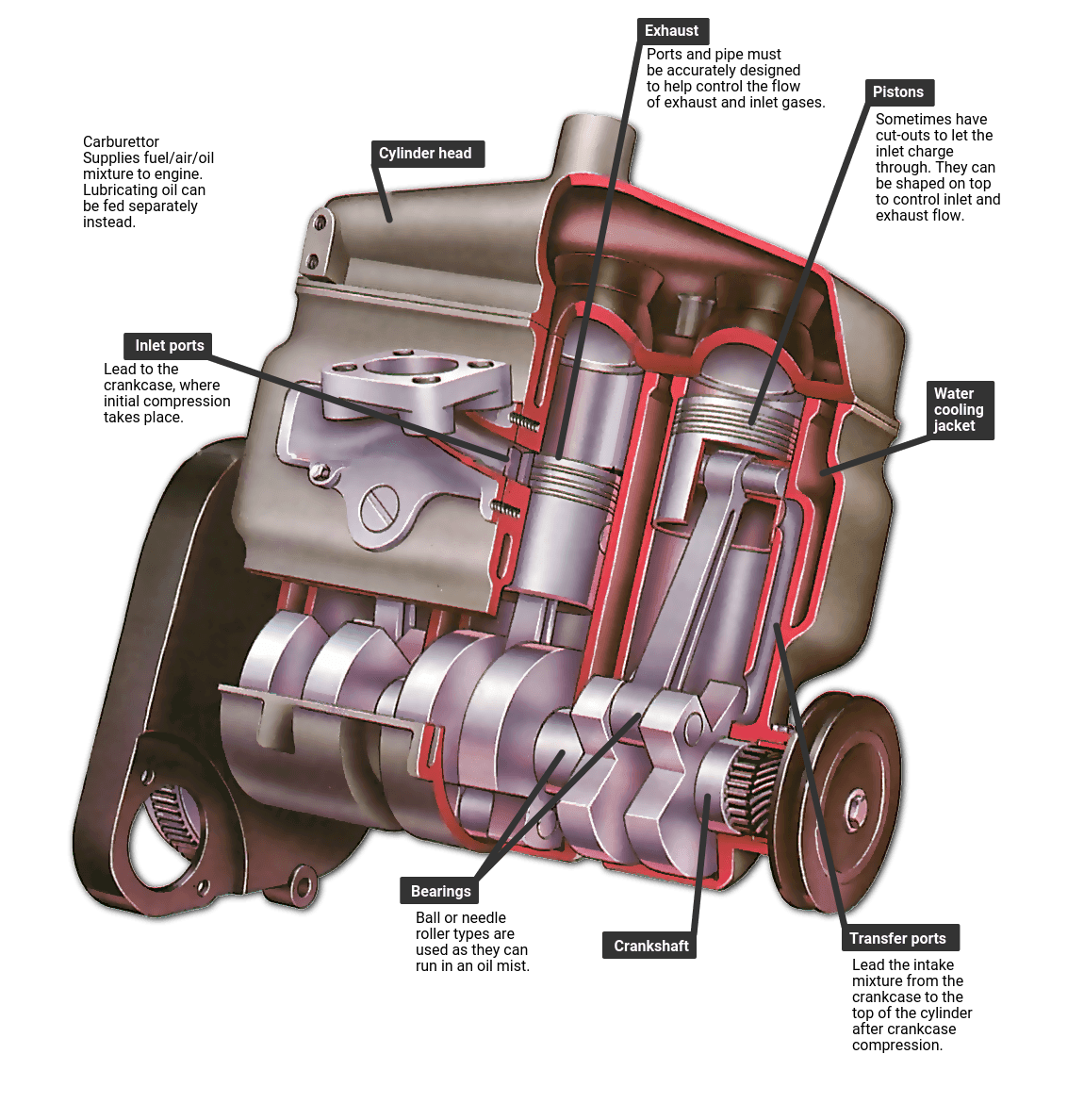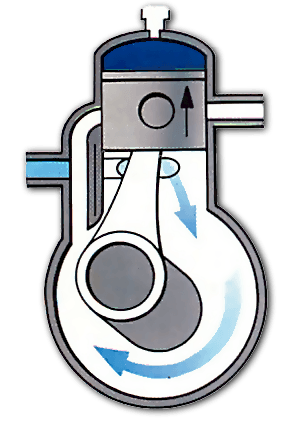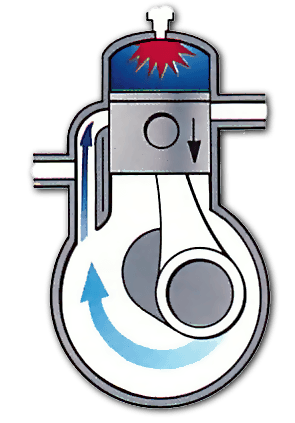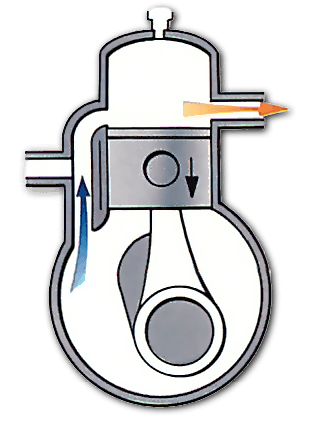How a two-stroke engine works
The Video Course teaches you everything about modern cars.
Almost all car engines work on the four-stroke cycle , so called because it takes four strokes of the piston induction , compression , ignition and exhaust - to produce one firing of the fuel /air mixture. This means that the crankshaft rotates twice to complete each cycle.

Some smaller engines, however, notably those fitted to some mopeds or motorcycles, operate on a two-stroke cycle - the piston is on a power stroke every time it moves down the cylinder so the crankshaft turns only once during each cycle. A few cars have used this engine too, such as the Wartburg Knight and some early Saabs.
Uniflow
The earliest two-strokes were of the uniflow type. With this design, the fuel/air mixture is forced into the cylinder by a rotary blower ( supercharger ) driven by the engine. There is no inlet valve : instead, there is an elongated hole, called a port, in the side of the cylinder near the bottom of the piston's stroke. The port is opened or closed as the piston passes up and down the cylinder. The exhaust gases usually pass out through a conventional cam-operated poppet valve .
The cycle starts with a down-stroke in which burning fuel pushes the piston down. When the piston uncovers the inlet port at the bottom of its stroke, fuel and air is pushed in above it. On the upstroke the exhaust gas is forced out and fuel is compressed, ready to be fired. To allow this to happen, the exhaust valve opens just before the descending piston uncovers the inlet port, so there is no resistance to the incoming charge .
The two stroke cycle



Modern version
Most modern two-stroke engines work slightly differently. Instead of having a blower to force the fuel/ air mixture into the cylinders, they use what is known as crankcase compression.
This type of engine needs no conventional valves. The inlet ports lead into the bottom of the cylinder which is open to the crankcase: higher up the cylinder on the opposite side are another set of ports leading to the exhaust pipe . A transfer port leads back up to the cylinder from the crankcase, entering at a slightly higher level than the inlet port, but a little lower than the exhaust port.
During the upstroke the piston uncovers the inlet port and allows the fuel/air mixture to rush into the crankcase, underneath the piston. Sometimes there is a cut-out in the side of the piston through which the mixture can pass to reach the crankcase.
When the piston reaches the top of the cylinder, the compressed fuel/air mixture is fired by a spark plug , forcing the piston down on the power stroke.
As the piston descends, it compresses the fuel/air mixture in the crankcase, and it also uncovers the exhaust poit closely followed by the transfer port. The exhaust gases start to escape as the exhaust port is uncovered, and are further scavenged (forced out) by the fuel/air mixture coming in from the transfer port under slight pressure from the crankcase.
To help scavenge the exhaust gases out of the cylinder, the top of the piston is often shaped to deflect the incoming mixture upwards. The mixture then doubles back when it strikes the cylinder head , flows down the exhaust port side and pushes the exhaust gases out.
The momentum of the gases from the transfer ports, which will have been open since near the bottom of the downstroke, continues to expel the exhaust products until the exhaust ports are closed. This system of expelling exhaust gases is known as loop scavenging .
Exhaust design
The design of the exhaust is more critical in a two-stroke engine than it is in a four-stroke engine. The burnt exhaust gases are not positively forced out by the upward-travelling piston, so it is essential that the exhaust system offers the minimum amount of resistance to the gases' path.
With most two-strokes, the inward rushing inlet charge helps to sweep the residual exhaust gases out of the cylinder. The problem is that some of the inlet charge — unburnt fuel — can be lost to the atmosphere because both the inlet and exhaust ports are open together for some time. However, the design of the exhaust pipe and silencer can be exploited to minimize this effect.
When an exhaust charge leaves the cylinder, it sends a pulse —a shock wave — down the exhaust pipe, which is reflected back from the end of the pipe. By paying careful attention to the design of the exhaust, engineers can arrange a system that can use the returning exhaust pulse to push the inlet charge, which is trying to follow the exhaust gases down the exhaust pipe, back into the cylinder.
Lubrication
In most engines the crankcase and sump contain the oil to lubricate the engine's moving parts. But with a crankcase compression two-stroke, the crankcase cannot do this because it is needed for initial compression of the fuel and air.






